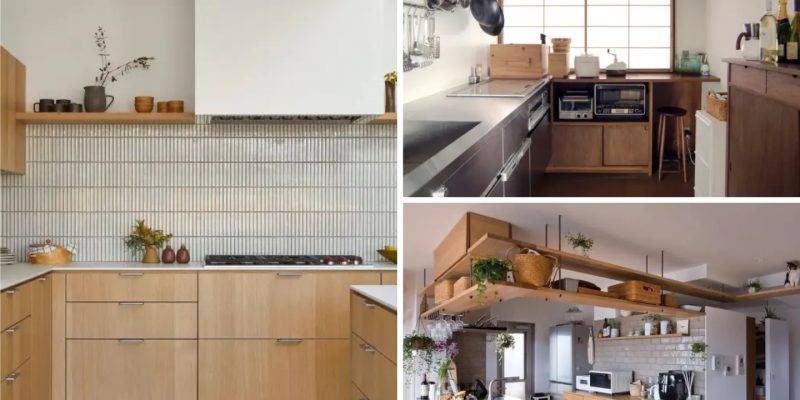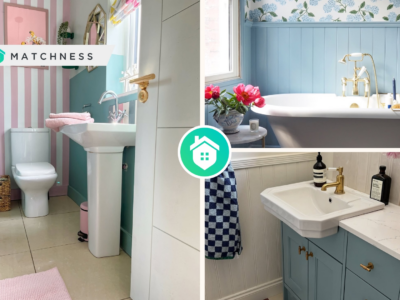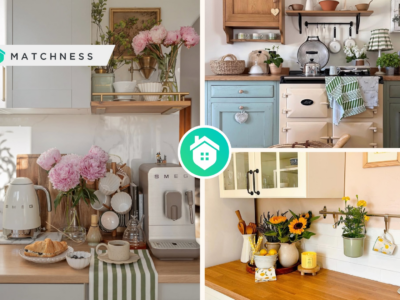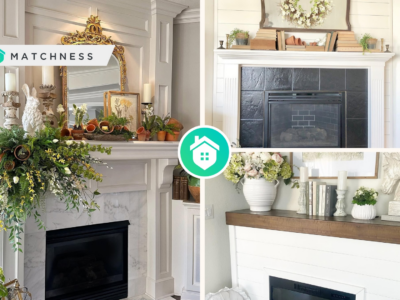Everybody knows that the kitchen is an important room in every home. This is a place where you make your favorite food, serve the best food for your family, and also a place to gather with your family. Well, designing an interesting and beautiful kitchen design is a must. Keeping it clean and organized is also an important thing. There are many kitchen designs that can be chosen and applied. But, for those of you who want a minimalist kitchen look but functional and embrace a natural vibe, maybe a Japanese-inspired minimalist kitchen is all you need.
Minimalist design principles are key to creating a Japanese kitchen. This style of kitchen is clean, uncluttered, and balanced – a welcome respite from the chaotic and messy kitchens we’re used to in the West. However, a minimal kitchen is not a blank slate; it’s important to incorporate some unique elements to give the space personality and make it feel like home.
Japanese kitchen design is also possible to be combined with other designs that have similar concepts. In recent years, a Japanese kitchen design is combining with Scandinavian. Combining Japanese-inspired elements with Scandinavian minimalism will create a modern kitchen that is both stylish and practical. Both carry simplicity and natural elements, making this design combination popular. This style blend is known as Japandi.
Japanese Kitchen Design
A Japanese kitchen design embraces a minimalist style and aims to achieve tranquility. It also encourages simplicity, modesty, and saving money. This is because the culture of Japan is based on Wabi-Sabi, a philosophy that values things for their simple beauty rather than for their practical use.
It’s possible to create a Japanese kitchen design in an open floor plan that blurs the line between the cooking area and the living space. This feature helps turn cooking into a leisure activity that is shared with the family. It can be done by using wide openings that let natural light into the kitchen or by using sliding shoji screens as room dividers.
The color scheme of a Japanese kitchen is usually neutral with hints of earthy colors such as beige and wood tones. Avoid bright or very dark shades as they can feel too stark.
Here are some Japanese-inspired minimalist kitchen designs to inspire you.
Multipurpose Island
One of the most popular features in a Japanese kitchen is the multipurpose island. This piece of furniture combines cooking and dining functions into one, which helps save space. In addition, the use of an efficient range hood is essential to reduce cooking smells and excess moisture.

In order to create a Japanese-inspired minimalist kitchen design, simplicity, and functionality is a must. Make sure the furniture you use functions properly and even multipurpose. Therefore, choosing a kitchen island that can be used for more than one function is highly recommended. You can choose a rather large island, apart from being used for preparing and cooking, it can also be used as a dining space. This aims to save space, be effective, and look minimalist but still functional. Multipurpose Island from @stewartschafer
Kitchen Furniture
The minimalist style of Japanese kitchens also plays with symmetry, incorporating functional furniture pieces and other decor items that are arranged neatly. Alternative storage systems that make use of slatted wood can help keep your kitchen clean and clutter-free.
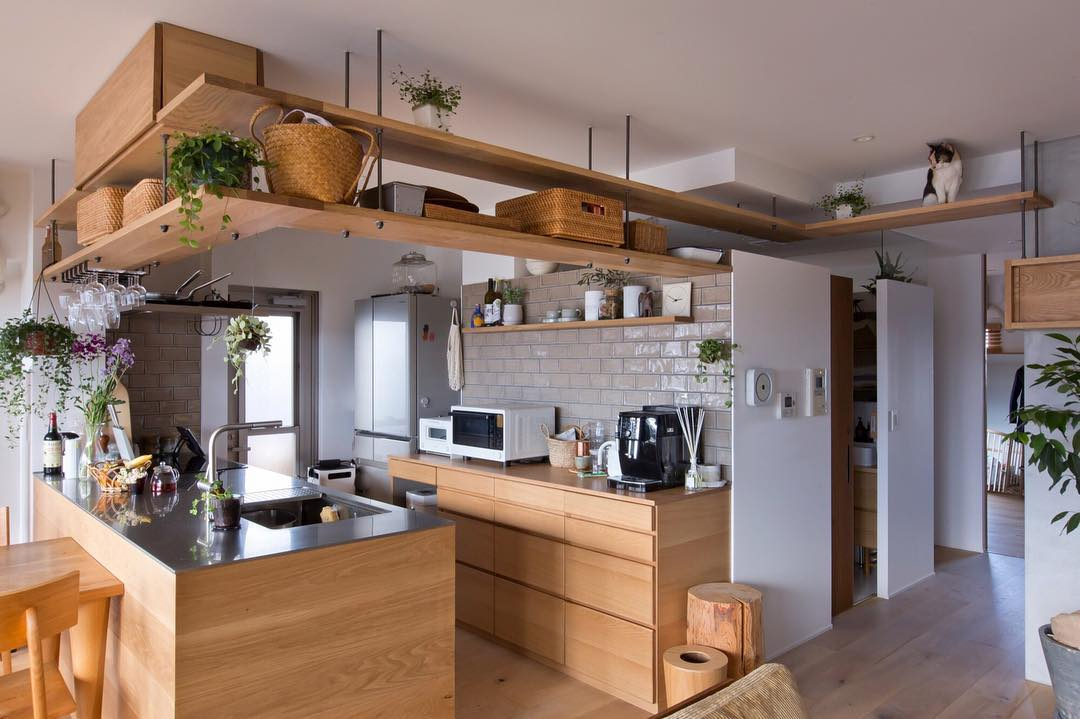
When designing a kitchen in the Japanese minimalist concept, functional furniture is important things. Open shelving is very common in Japanese kitchens but they are not meant to be cluttered with items. Keep the items you use often neatly tucked away in cabinets and make sure to clean up your benchtops regularly to eliminate clutter and mess. Kitchen Furniture from @homify
Clean Kitchen with Functional Storage
Avoid overly cluttered or overbearing decorations in your Japanese minimalist kitchen. Cleanliness and simplicity are paramount in this style. Rather than filling your kitchen with gadgets and decor, stick to what you use on a daily basis. This creates a space that feels less busy and more peaceful, and it allows you to streamline your storage options to make your room more organized and functional.
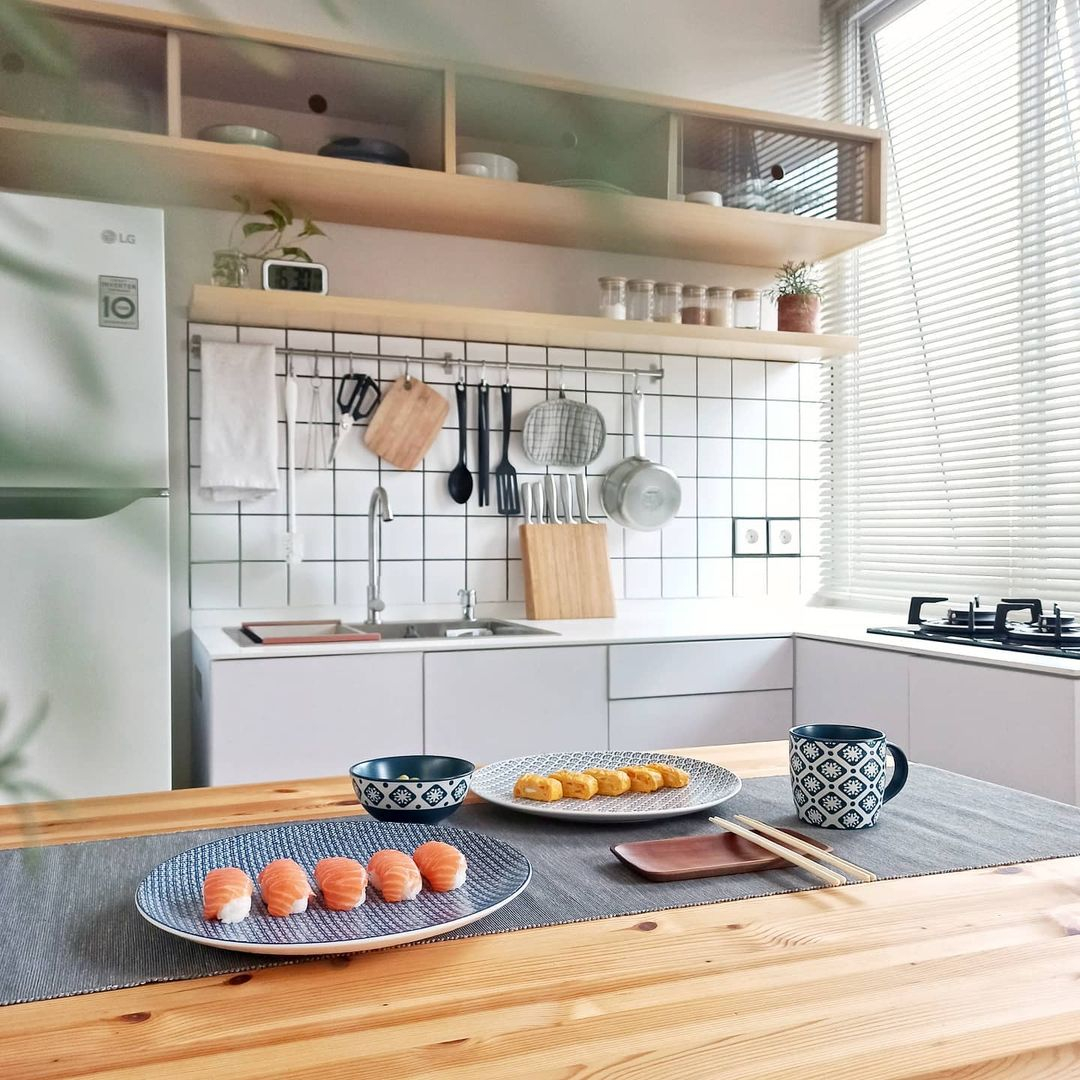
Make sure your kitchen is always clean and neatly arranged. This is an important thing, in order to create a Japanese-inspired minimalist kitchen design. You can opt for putting daily-use items in your kitchen. Don’t fill your kitchen with lots of unnecessary equipment and decorations that will only make your kitchen feel full and unattractive. For additional storage, you can use open shelving and use other simple organizers, such as installing a tension rod with some hooks. Clean Kitchen from @ruma.ciel
Natural Lighting
Natural lighting is essential in Japanese-inspired minimalist kitchen design, creating a calming atmosphere. The best way to bring in this element is with large windows, skylights, and glass doors that allow the sun to filter through to create a bright and airy space. Additionally, natural materials like wood and stone are used throughout the kitchen to create a warm and organic feeling.
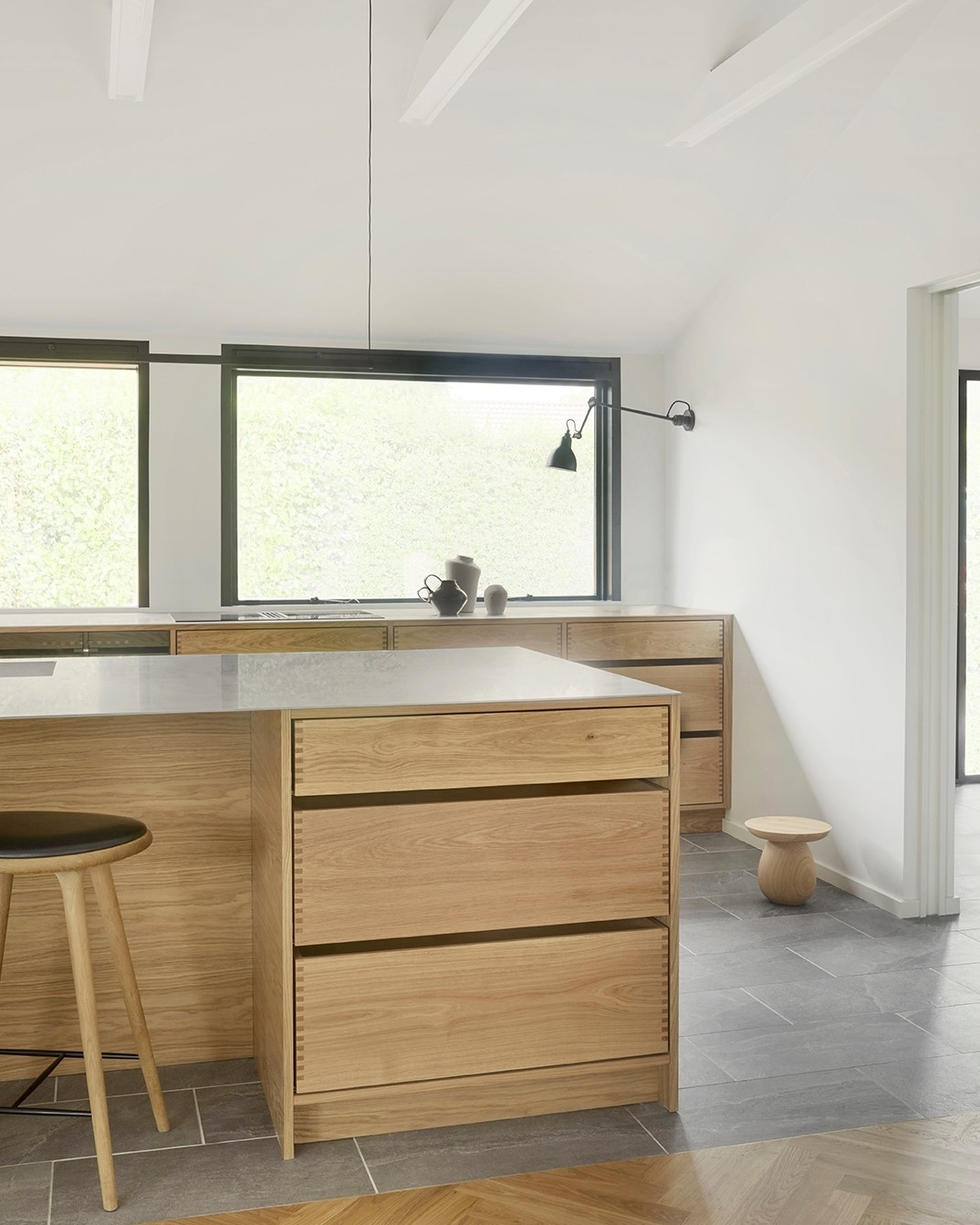
Let the natural light enters your kitchen to create a bright and serene atmosphere. In Japanese kitchen design, installing a wide window is key. You can adapt it by installing a large window in your kitchen. The combination of natural light with the wooden elements used in the kitchen cabinet makes this kitchen even more comfortable to use. Natural Lighting from @handcraftedinterior
Color Scheme
In Japanese minimalist kitchen designs, neutral colors like white and light wood tones create a calm and serene atmosphere. These earthy hues are also important to complement the natural textures used in these kitchens. Neutral shades also allow you to showcase your kitchen’s design features without competing for attention.
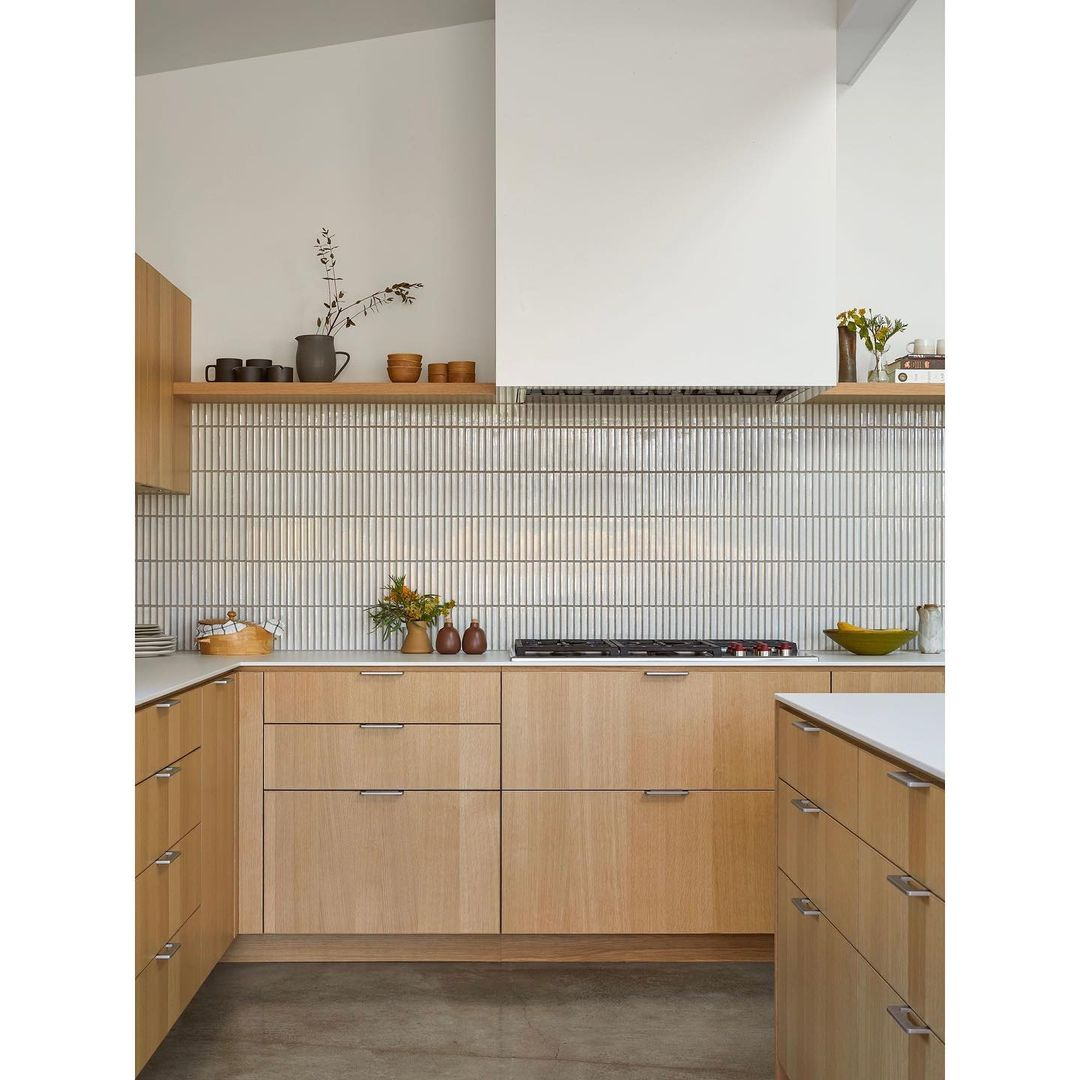
Using a neutral color scheme is recommended for Japanese-inspired kitchen décor. In addition to representing minimalism, the use of neutral colors will create a calm nuance. In this kitchen, the application of white colors on the walls looks to match and is great with the wood cabinet. The white color used does not prevent other elements in your kitchen from standing out, such as natural elements in cabinets and shelves as well as modern features in your kitchen. Everything looks harmonious and complementary in minimalist concepts. Neutral Color Scheme from @cathiehonginteriors
Natural Elements
Bring natural elements into the kitchen to create a welcoming and peaceful atmosphere. From shoji screens to tatami mats, organic accents can bring a touch of Japandi style into the room. Bringing the outdoors in also has its benefits, such as allowing natural light to filter into the room and improving air quality.

The translucent paper used in shoji screens allows natural light to filter into a space without making it blindingly bright. This feature adds to the overall feel of openness in a Japanese-inspired kitchen, fostering a sense of nature-oriented serenity. Shoji Screens from @singularandmultiple
Hardwood Floor
Neutral, nature-inspired colors are also essential in Japanese kitchen design. Earthy tones feed into wood textures and complement the natural light that’s a hallmark of this style. In this case, the use of a hardwood floor will make the kitchen more warm, comfortable, and feels natural.

Emphising a natural material can also be applied to the floor. The use of hardwood floors in a Japanese-inspired minimalist kitchen design will create a natural feel and works well with the natural light that enters from the large windows. These two combinations are the hallmark of this style. The wood texture can also be applied to the kitchen cabinet and dining table and chairs. And to strengthen the Japanese vibe, you can add a lamp inspired by Japanese culture. Hardwood floor from @royaloakfloors


